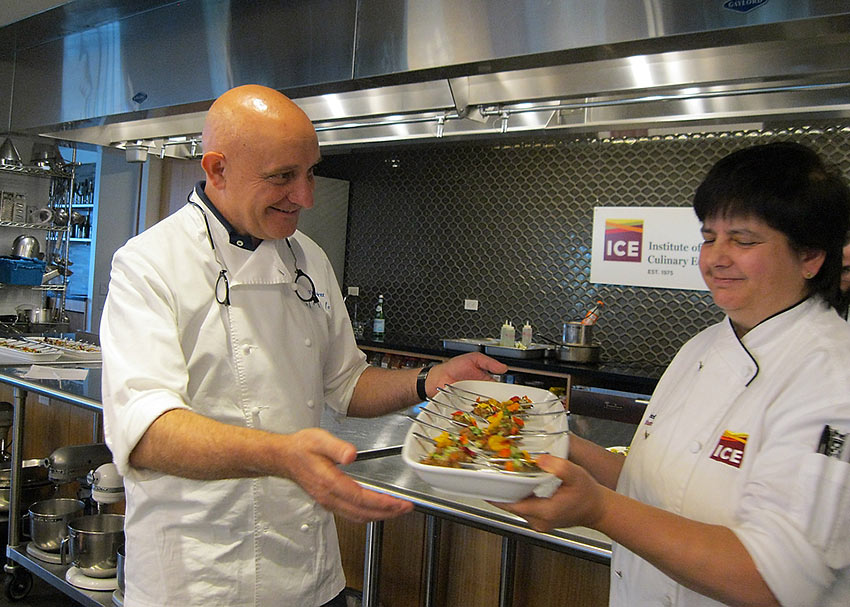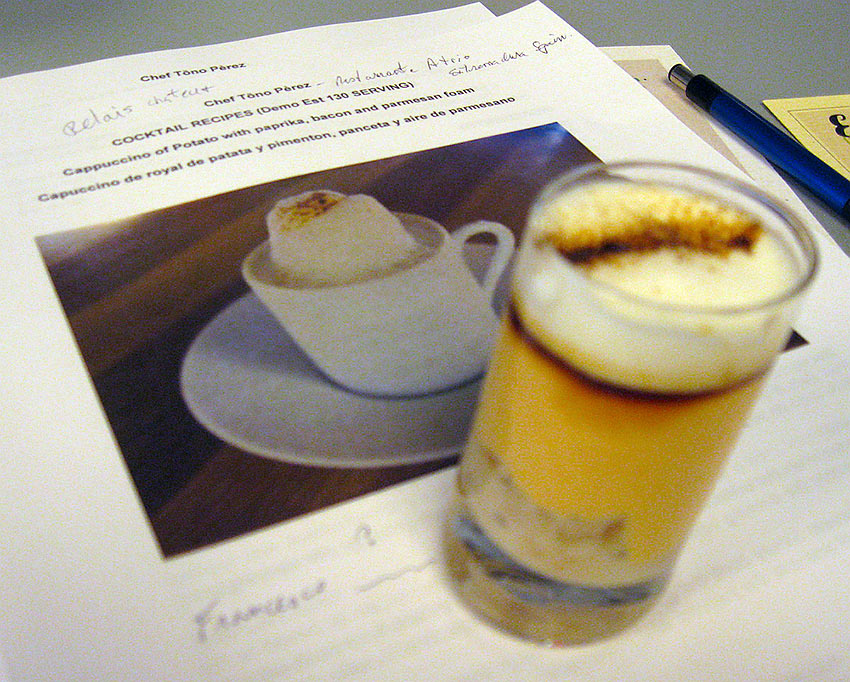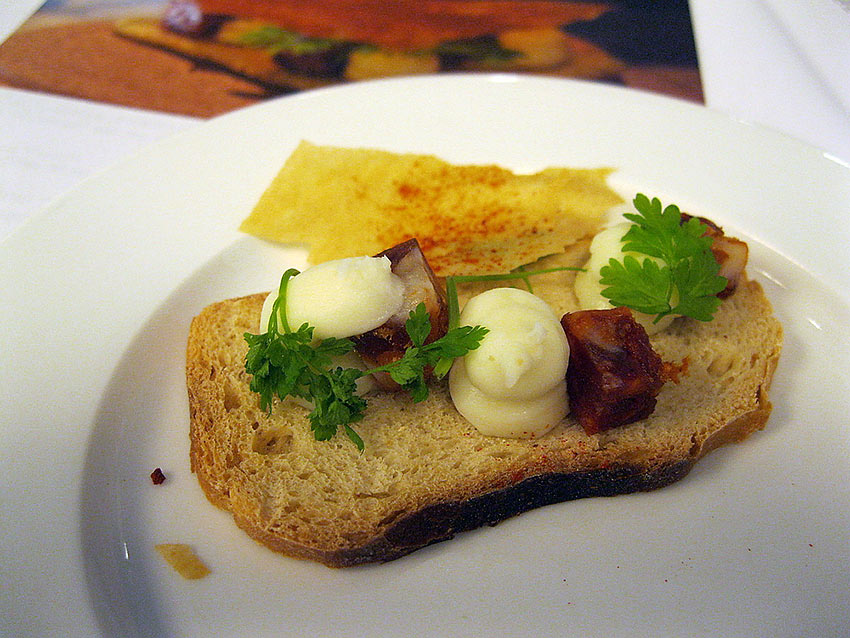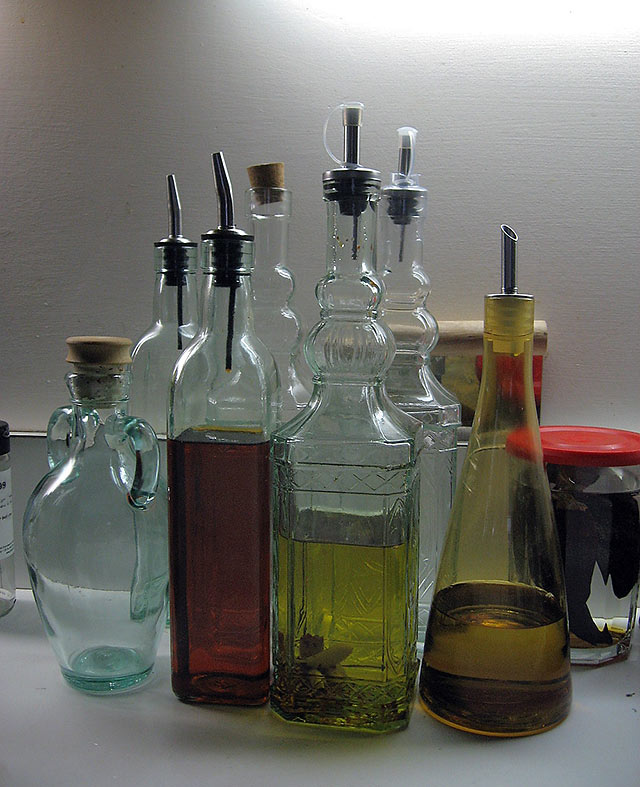 |
 |
|
 |

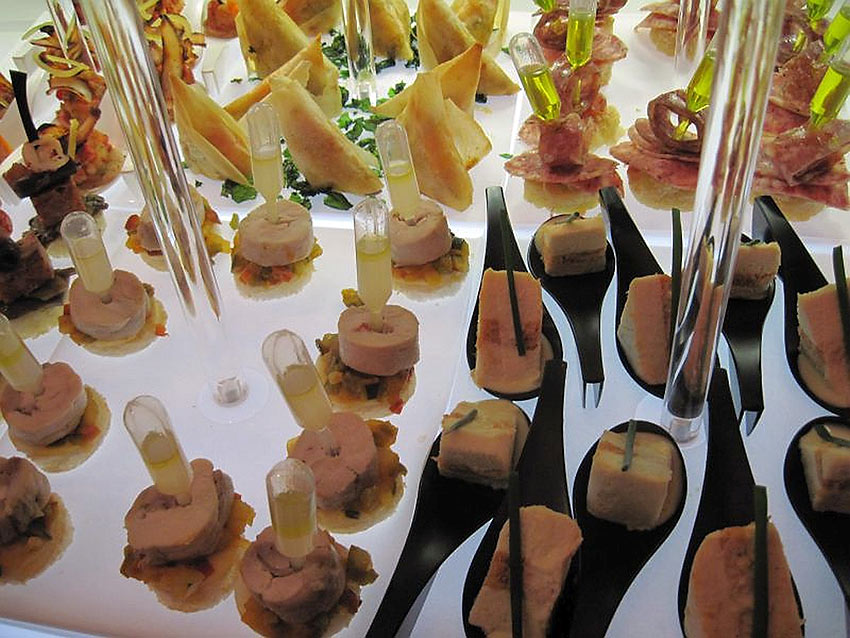 Many elaborate tapas on display Tapas Master
Class for World
Story and photographs by Richard Frisbie |
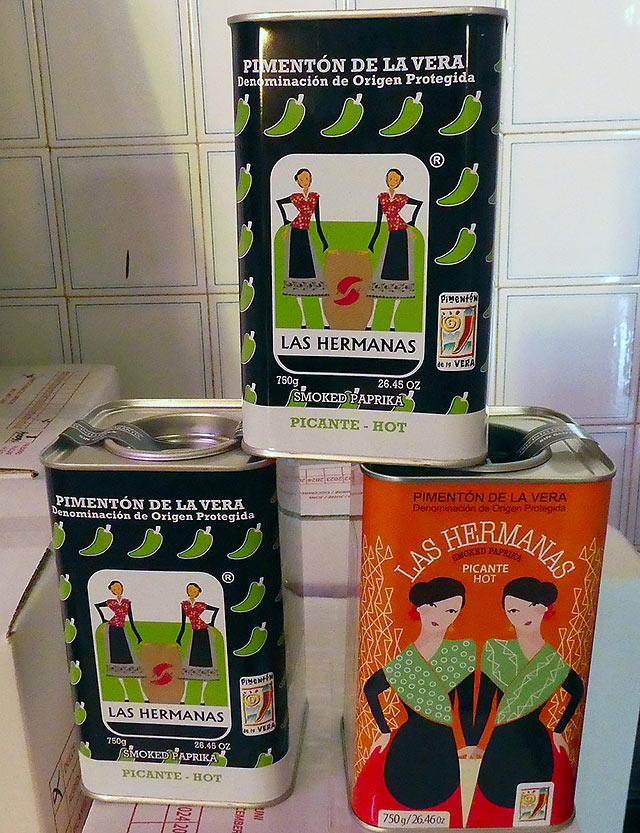 Extremadura's exceptional paprika with its
own D.O.
|
A more classic tapas, meaning bite-size goodies on a piece of bread, appeared to be next on the menu, but – as in the espresso – looks can be deceiving. In this case the "bread" was a dehydrated, twice-cooked and pressed pork skin; all crunchy and delicious. On it were dotted a creamed local cheese and diced chorizo, garnished with stems of chervil and topped with a thin wafer of briefly baked phyllo pastry that had been brushed both sides with the same garlic/paprika sauce. Here's a video of that tapas being made.
Paprika is one of many specialty products of Extremadura. Since Chef Toño used a garlic/paprika sauce in so many dishes, I want you to have the recipe. You should know ahead of time that this makes a lot of sauce; he was feeding 130 students. But there are so many uses for it and it keeps well, so don't be shy about making a batch.
Simmer 1300 grams (about three pounds) of garlic in 2600 grams (about 3 quarts) of olive oil until golden. Reduce heat and add your herb or herbs of choice – for the above recipes it is 208 grams (about 7 ounces) of fresh rosemary – but in the next recipe it is 130 grams (about 4 ounces) of dried oregano and thyme combined.
Next, his recipe states "add paprika to taste", but my recipe at home from a different Spanish chef, calls for no more than 110 grams (about 4 ounces) of paprikas – both hot and sweet – mixed to your taste. So you can see there is some flexibility here. Basically you're making a paprika flavored olive oil, so you can imagine its uses. I sauté vegetables in it, use it as part of a meat marinade, and cook shrimp in it. My recipe was originally meant as a drizzle over octopus and potatoes, a typical Galician dish, so I called it Galician oil. You can see that recipe here.
My collection of flavored oils – red is garlic/paprikaFinally, stir all the ingredients just to combine and simmer together on low for one hour. Then cool to room temperature and allow to settle. My Galician chef added this wisdom: "most people ruin the sauce either by stirring it, or not letting it cool thoroughly." Gently remove solids and strain, trying not to have any paprika in the final sauce – "it will make the oil bitter."
The final tapas is also misleading in that it is called Pork Tartar with flowers and herbed mustard. This a standard tapas in that it really is made with a toasted slice of bread, but the pork is cured, not raw. Since it is not "cooked" technically it can be called tartar, but don't worry – you're not eating raw pork. It was finely minced with egg yolk, pickles and onions, just like a beef tartar. Then a little garlic/paprika sauce and mustard were added before it was put in a pastry bag and chilled. That, piped onto the toast, with a mustard and creamed cheese mix dotted on top of it – the whole covered with edible flowers and micro greens – made a stunning and delicious treat!
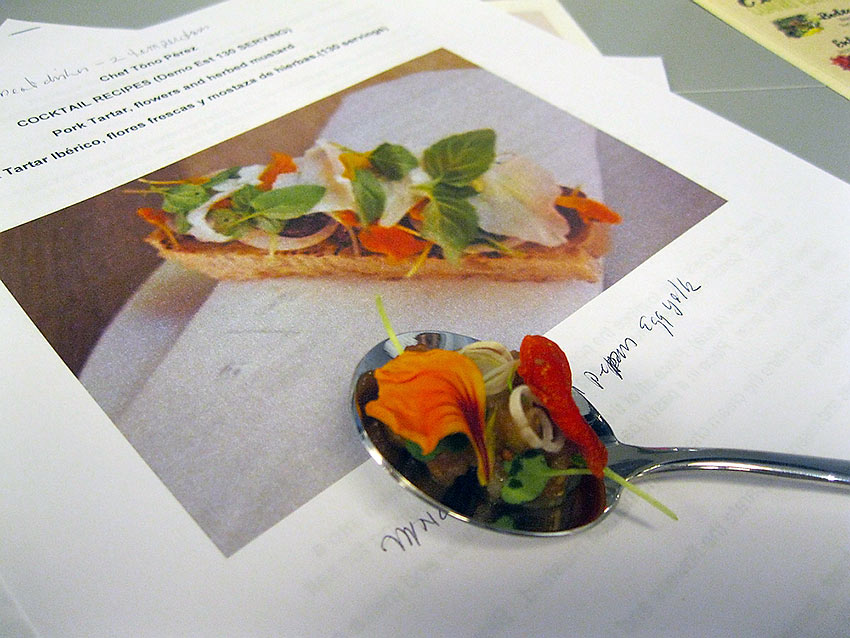
The original was on bread but the finished tapas
was on a spoon sans bread
There. Thanks to Chef Toño Pérez and the
fine ingredients of Extremadura, you have three tapas to make for World
Tapas Day. You have plenty of flexibility in the recipes. Meaning, you
can't go wrong so long as you use the finest ingredients and the pictures
of the finished tapas as a guide. Please contact me or leave a message
below if you'd like the complete recipes. (And do make that garlic/paprika
sauce – you'll love it!)
Related Articles:
TAPAS:
Opposite Sides of Madrid’s Culinary Coin; A
Food & Wine Tour of Alcala; Savoring
Seville As We Wave Adiós; Edible
Books in Spain
|
This site is designed and maintained by WYNK Marketing. Send all technical issues to: support@wynkmarketing.com

|






